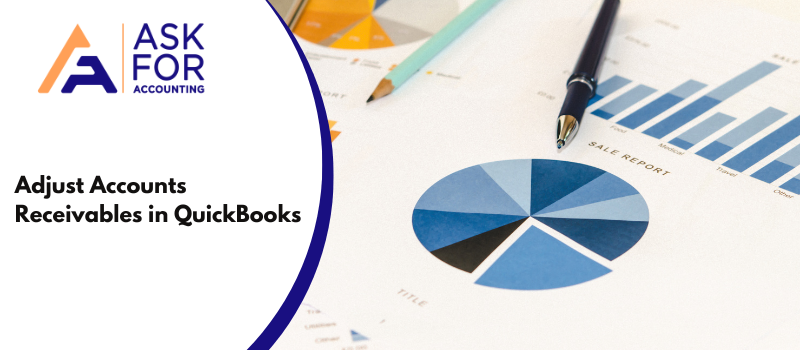Accounts receivables are usually created for a short period of time. You can easily manage AR in QB, but for that, you should know how to adjust accounts receivables in QuickBooks Desktop.
Accounts Receivable is a form stating the amount that an organization is entitled to, from a client or customer. They are created for keeping track of due payments. If you don’t then no worries, here we will discuss the step-by-step process on how you can exactly do so all with ease.
How to Track Accounts Receivables?
For keeping track of A/R, you would need to use the chart of accounts. All accounts receivables can be tracked through the accounts receivables account present under the chart of accounts. In fact, a chart of accounts can link you to all the accounts present for a particular company file. Accounts Receivable accounts are created automatically by QuickBooks for all company files. It is recommended that you don’t create multiple account receivable accounts as this may hamper the reporting feature present in QB.
Caution:
For creating accurate reports, record these forms with clinical precision. Also, ascertain the accounting basis that is used by your organization. On a cash basis, transactions aren’t recorded until the amount against them is received. On the other hand, on an accrual basis, transactions are recorded despite the status of payment.
Tips to Adjust Accounts Receivable in QuickBooks Desktop
For adjust accounts receivables in QuickBooks Desktop, follow the steps given below.
Step 1: Create your Accounts Receivable
- Create an invoice by going to the Create option
- Enter all the necessary information such as customer name, product/ service name, description, transaction amount, and so on.
- Do not apply for any payment on the invoice. Click on Save.
Once you create an invoice, without applying any payment to it, QB will start recognizing it as an A/R. Once you receive the payment against this invoice, you can easily apply it. You can create a report for searching through invoices. By creating a report and applying filters, you can substantially narrow down your search.
Step 2: Record a Payment Against the Invoice
- Record the payment. The payment will be transferred to Undeposited Funds.
- Go to the invoice and click on apply for payment.
- From the drop-down list, select the payment that you want to apply to that particular invoice.
- Click on save and close.
By following the aforementioned steps, you will be able to adjust accounts receivables easily in QB. Also, make sure to reconcile the transactions before applying payments to the invoice. This will help in maintaining accuracy.
Tips and Tricks to Adjust Accounts Receivables of One Customer with Another Customer
Follow the below steps to adjust accounts receivables of one of the customer with another customer without showing it in AR Aging report.
Step 1: Create a Journal Entry and then Apply
- The + New button will appear.
- Choose a journal entry.
- The journal date should be set to the current date.
- Select Accounts Receivable (A/R) from the Account drop-down list on the first line item.
- The amount being transferred should be entered in the Debits field, then a memo may be added if necessary.
- Select the name of the customer whose credit is being transferred from the Name drop-down list.
- Choose Accounts Receivable (A/R) from the Account drop-down list. The credit amount and memo will automatically appear.
- Select the name of the customer to whom the credit is being transferred from the Name drop-down list.
- Choose Save or Save and close.
Step 2: Apply the Credit
- The + New button will appear.
- Choose Receiving Payments under Customers.
- Choose the customer from whom the credit was transferred.
- Check the journal entry you created under the Outstanding transactions section.
- Check the box next to the credit note you want to transfer under Credits.
- Close the window by selecting Save.
Reconciliation statements are created after tallying transactions from a particular account with the transactions mentioned on the bank statement. Through reconciliation statements, you can even identify fraudulent cases such as money laundering. It delineates a clear picture of the flow of money and helps organizations in their journey toward success.
In any case, if you encounter a problem while adjusting account receivables in QuickBooks then feel free to contact us.

